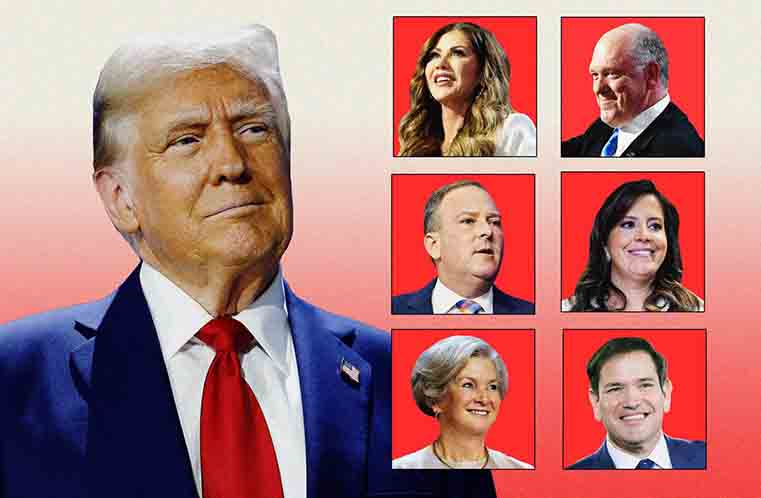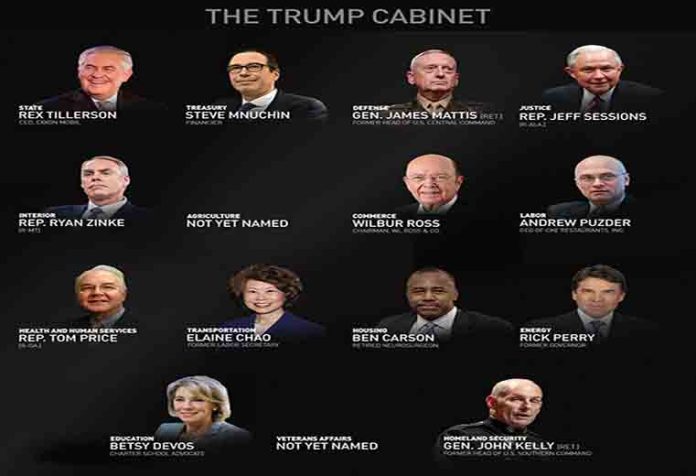As the midterm elections draw closer, the repercussions of recent votes regarding Trump’s cabinet have begun to echo through the campaigns of vulnerable Senate candidates. In states where the electorate has shown a propensity for moderate views or outright opposition to some of Trump’s policies, senators who supported the president’s nominations may find themselves facing backlash from both their constituents and the Democratic opposition. Candidates in swing states with tight races are particularly at risk, as voters increasingly scrutinize whether their representatives align with the administration’s controversial choices.
The stakes are high, especially for those already in precarious positions. The following factors could significantly influence voter sentiment:
- Public Perception: As dissatisfaction with certain cabinet appointments grows, candidates may have to navigate the choppy waters of public opinion, balancing loyalty to the president with the wishes of their electorate.
- Campaign Messaging: Those who supported Trump’s choices may struggle to effectively communicate their reasoning without alienating moderates or independents.
- Opposition Strategy: Democrats are likely to capitalize on any perceived misalignment between these candidates and their constituents, framing them as out of touch or overly influenced by party leaders.

Strategic Voting Patterns: Analyzing Constituency Reactions
As the midterm elections approach, constituents are reflecting on how the actions of former President Trump’s cabinet may influence their voting decisions. In districts where local controversies have emerged, voters are increasingly concerned about the alignment of their candidates with the policies and decisions of the previous administration. Key issues driving these reactions include:
- Healthcare Access: Many voters are worried about cuts to healthcare programs and how these might affect them directly.
- Environmental Policies: Constituents in ecologically sensitive areas are reacting strongly against candidates who might continue cabinet members’ legacies of deregulation.
- Economic Recovery: As communities battle with recovery, sentiments are mixed regarding tax policies and federal support initiated during Trump’s presidency.
In this complex and charged landscape, many candidates find themselves in a precarious position, needing to balance loyalty to former party leadership with the imperative to address the pressing concerns of their constituents. Observers note that strategic voting patterns could emerge, where voters may opt for candidates who they perceive as moderate, even if it means breaking away from traditional party lines. This trend underscores the evolving political landscape and the potential realignment of voter sentiments as they respond to the past actions of leadership that they may find contentious.
Historical Context: How Cabinet Decisions Have Shaped Midterm Outcomes
The decisions made within the cabinet of a sitting president can have lasting ramifications beyond the immediate political landscape. Historical precedents indicate that cabinet actions—especially those that are controversial or divisive—can significantly influence midterm elections. For example, the cabinet’s stances on healthcare reform, tax policies, and foreign relations have previously swayed public opinion, stirring both enthusiasm and dissent among voters. In past elections, candidates have capitalized on cabinet decisions that resonate with constituents, using them as focal points in campaigning to either garner support or ignite backlash. The impression left by the cabinet becomes a critical barometer for voter sentiment, particularly as midterms approach when political dynamics can shift more prominently. Amid these historical trends, the Trump administration’s cabinet actions are particularly noteworthy as they navigate several contentious issues that could jeopardize the electoral prospects of Senate candidates allied with the former president. Key considerations include:
- Environmental Regulations: Stripping protections could alienate moderate voters concerned about climate change.
- Healthcare Policy Shifts: The impact of undermining the Affordable Care Act may turn crucial swing voters against candidates.
- Trade Wars: Tariffs and their economic repercussions, especially in agricultural states, could provoke backlash against incumbents.
As we look deeper into these midterm races, it becomes clear that cabinet decisions from Trump’s administration will not only impact legislative agendas but could fundamentally reshape the electoral map as candidates grapple with the political fallout. The stakes are high, and the resonance of these choices will likely play a pivotal role in determining Senate control in the upcoming elections.
Recommendations for Candidates: Navigating the Trump Influence in Campaigns
The influence of Donald Trump on Republican candidates during the midterm elections presents a complex challenge for aspiring politicians seeking to distance themselves from controversial aspects of his presidency. Candidates must carefully navigate this terrain by adopting strategies that resonate with the base while also appealing to moderates and independents. Essential recommendations include:
- Define Your Brand: Candidates should articulate a clear vision and identity that either aligns with or thoughtfully diverges from Trump’s policies, without alienating his supporters.
- Engage in Public Dialogue: Actively participating in forums and town hall meetings can provide candidates with the opportunity to gauge public sentiment and craft their messages accordingly.
- Utilize Digital Platforms: A strong online presence can facilitate the spread of their narrative, allowing candidates to control the conversation and attract undecided voters.
Moreover, addressing potential opposition from Democratic candidates or moderate Republicans who criticize Trump’s cabinet votes is paramount. Understanding local issues and voters’ sentiments about Trump’s controversial decisions will empower candidates to counteract the narratives surrounding them. They can achieve this by:
- Highlighting Local Concerns: Shift focus to the constituents’ needs and advocate for policies that benefit the community rather than solely national party politics.
- Building Coalitions: Form alliances with local leaders and grassroots organizations to strengthen their support base and counterbalance Trump’s influence.
- Maintaining a Flexible Approach: Candidates must remain adaptable, ready to pivot their strategies based on ongoing events and voter feedback, ensuring they remain relevant and approachable.
